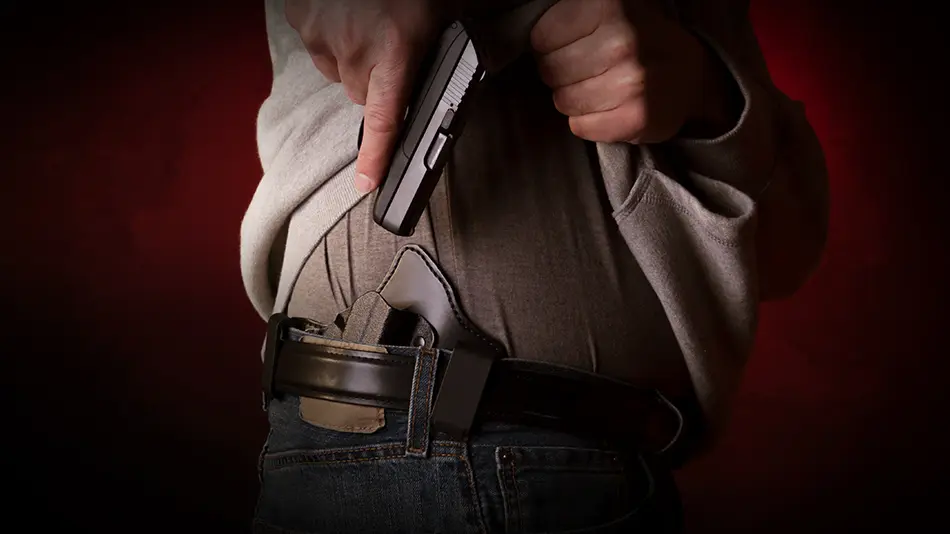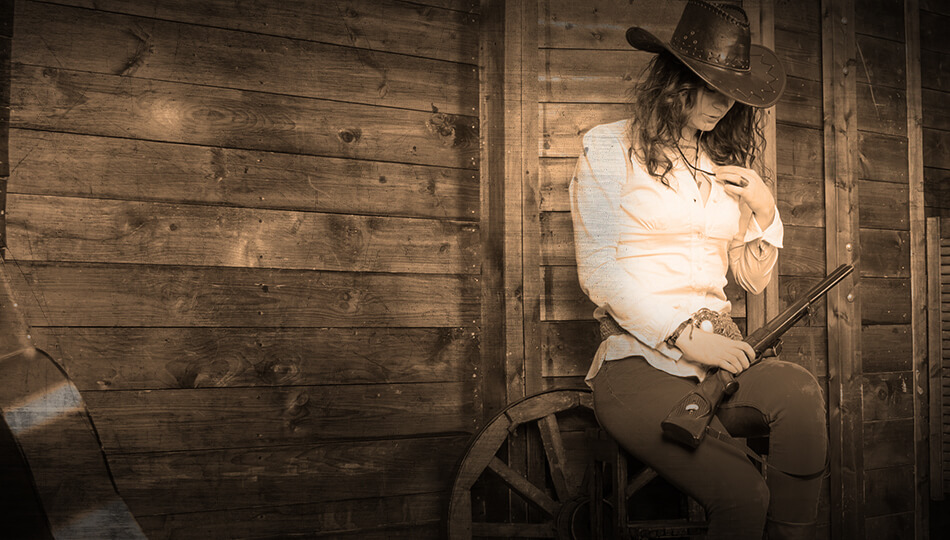
Can a judge sign an order allowing police to seize your guns without you even breaking a single law? In recent years, there has been a nationwide push for “extreme risk protective orders” or “red flag” laws specifically designed to remove firearms from people accused of engaging in conduct or making statements that others may deem “dangerous.” You’ve probably heard about them in the news recently; but what are they? What do you need to know about them, and how could they be used to take away your Second Amendment rights? Let’s look at the history of these laws and how California uniquely falls on this hotly debated area.
The History of Red Flag Laws
Red flag laws entered prominent national discourse in 1999 when Connecticut passed the first one of its kind because of a mass shooting at the Connecticut Lottery headquarters. Lawmakers in Connecticut intended this law to target individuals with specific mental health conditions and prevent them from accessing firearms.
More recently, on February 14, 2018, a 19-year-old former student opened fire at Marjory Stoneman Douglas High School in Parkland, Florida, horrifically killing 17 people and injuring 17 others. There was an immediate national outcry to “do something” to stop what the media has frequently dubbed “gun violence.” When information emerged that the shooter had documented mental health issues, lawmakers across the country began pushing for laws to take away guns from individuals whose behavior raised a “red flag” that they could be a threat to themselves or others.
In theory, the purpose of these laws is to identify an individual who exhibits early warning signs of danger and prevent a criminal act from occurring by preemptively disarming them. However, there’s an obvious irony: with red flag legal proceedings, the person’s firearms are seized, but the individual may be quickly released back into society, free to pursue whatever misdeeds they might choose to do.
Many of the states with red flag laws currently on the books allow for an enforceable court order that prevents the person from owning, purchasing, possessing, or transporting firearms and ammunition for a specified period of time. Several jurisdictions also allow the extension of these orders if the affected individual is still “deemed a threat.”
As of the publish date of this article, 19 states and the District of Columbia have enacted versions of red flag laws. How do things stand for California?
Red Flag Laws in California
The California legislature passed a prime example of a red flag law in 2014. Dubbed a “Gun Violence Restraining Order” or “GVRO,” this type of order is used in the California Penal Code to refer to an injunction that may be imposed in certain circumstances to keep firearms out of the hands of the dangerous and the unstable. Cal. Penal Code § 18100 defines a GVRO as “an order, in writing, signed by the court, prohibiting and enjoining a named person from having in their custody or control, owning, purchasing, possessing, or receiving any firearms or ammunition.” An immediate family member, law enforcement officer, employer, co-worker, or employee or teacher of a secondary or post-secondary school may file a petition for a GVRO under certain circumstances.
Issuance of a GVRO is typically a two-step process. First, either a temporary emergency GVRO may be sought by law enforcement; or another person eligible under the statute may file an ex parte petition with the court asking for an order to be imposed based solely upon the information provided by that person. Ex parte means by or for one party; done for, on behalf of, or on the application of, one party to a legal proceeding only. Here, it generally means the subject of the order is not notified and has no opportunity to contest the order. Both types of orders basically act as a temporary order until a more formal hearing may be conducted on the issue of whether a GVRO should be imposed against a person. At the later hearing, the person against whom the order is sought is allowed to be heard.
Generally speaking, for a court to issue either a temporary emergency GVRO or an ex parte GVRO, either the law enforcement officer or other person eligible under the statute must provide adequate information sufficient to support an inference the dangerous and unstable person poses a danger of personal injury to themselves or another by having access to firearms or ammunition. Further, it must appear that either a temporary emergency GVRO or ex parte GVRO is necessary to prevent personal injury to the subject of the petition or another because less restrictive alternatives either have been tried and found to be ineffective, or have been determined to be inadequate or inappropriate under the circumstances. Cal. Penal Code §§ 18125, 18150. Once issued by a court, the temporary emergency GVRO or ex parte GVRO will be personally served on the restrained person, typically by a law enforcement officer, who will ask the restrained party at that time whether they have any firearms, ammunition, or magazines within the person’s possession or under their custody or control. Cal. Penal Code §§ 18135, 18160.
Within 21 days from the date the order is issued, the court must then hold a hearing to determine if the temporary injunction should be converted into a permanent GVRO. Cal. Penal Code §§ 18148, 18165. At that hearing, the petitioner has the burden of proving, by clear and convincing evidence, the person subject to the ex parte GVRO poses a significant danger to themselves or another by having access to firearms, ammunition, or magazines and a GVRO is necessary to prevent such injury because less restrictive alternatives have been tried and found to be ineffective or are inadequate or inappropriate under the circumstances. Cal. Penal Code § 18175. At this hearing, the person subject to the ex parte GVRO will have the opportunity to address the petitioner’s allegations either by presenting contrary evidence or argument.
If the court finds the petitioner has met their burden, a GVRO will be issued for a period of time between one and five years. A person subject to a GVRO is permitted to make one written request per year during the effective period of the order for a hearing to terminate the order. Cal. Penal Code § 18185. If, at such a hearing, the court determines that there is no longer clear and convincing evidence that either of the above circumstances exist, the court may then terminate the restraining order. On the other hand, the original petitioner, or any other person with standing, may request renewal of the GVRO at any time within three months before the expiration of the order but must prove both of the above required circumstances continue to be true. Cal. Penal Code § 18190.
A person who knowingly violates a valid GVRO is guilty of a misdemeanor and also will be prohibited from possessing firearms or ammunition for a five-year period that begins upon the expiration of the existing GVRO. Cal. Penal Code § 18205. A petitioner who files for a GVRO knowing the information in the petition to be false or with the intent to harass, is likewise guilty of a misdemeanor. Cal. Penal Code § 18200.
Given the extremely short period of time between issuance of a temporary order and the GVRO hearing, U.S. LawShield members should immediately get in touch with an Independent Program Attorney upon being served with an order. The subsequent hearing is the best opportunity to challenge the allegations and avoid issuance of a GVRO. As such, it is critical to use the few weeks prior to this hearing to prepare to challenge the allegations. Indeed, it is nearly impossible to convince a court after the fact that a GVRO should be terminated early.
Potential Future Legislation in California
Due to recent expansions in our red flag laws, it is unlikely that this issue will be addressed again by the legislature in the near term. The California Legislature recently expanded California’s original red flag law through AB 61. Previously, only immediate family members or law enforcement officers were authorized to petition a court for a GVRO. As provided above, employers, co-workers, or employees or teachers of secondary or post-secondary schools may now petition a court for a GVRO. Also, as provided above, AB 61 now permits a GVRO to be extended up to five years, as opposed to one year under the original law.
If you have questions about red flag laws or any other gun-related legislation, call U.S. LawShield and ask to speak to your Independent Program Attorney.
The information provided in this publication is intended to provide general information to individuals and is not legal advice. The information included in this publication may not be quoted or referred to in any other publication without the prior written consent of U.S. LawShield, to be given or withheld at our discretion. The information is not a substitute for, and does not replace the advice or representation of a licensed attorney. We strive to ensure the information included in this publication is accurate and current, however, no claim is made to the accuracy of the information and we are not responsible for any consequences that may result from the use of information in this publication. The use of this publication does not create an attorney-client relationship between U.S. LawShield, any independent program attorney, and any individual.





Leave A Comment